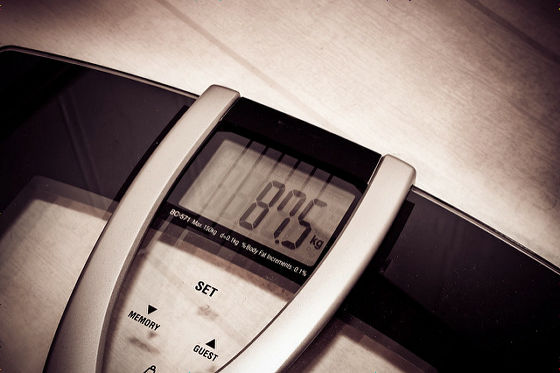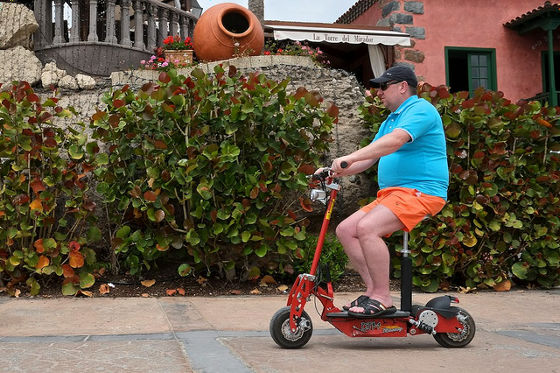How does body weight, BMI, blood glucose level, metabolic efficiency change in the 29 day hiking life? Actual record

ByMicah. H
"Living without sitting" gives to health and lifespanIn order to live a healthy life from such things as "Moderate exerciseIt is no longer common sense to need it. However, it is hard to understand that exercise actually affects the body. So, in order to visualize the influence of exercise on the body, we conducted hiking in the nature for 8 to 10 hours a day for 29 days, and how weight, body fat, blood glucose level, hormone value etc are like before hiking The report which observes whether it changes to the one which is different from the other is published.
This Is What Happens to Your Body on a Thru-Hike | Outside Online
https://www.outsideonline.com/2125031/what-happens-your-body-thru-hike
Kyle Boelte is a 35-year-old man. Height was 175 cm, and the weight before starting hiking was 68 kg. Like many employees on weekdays we sit in front of the computer on weekdays, but we often go about jogging about 8 km a week and go live by mountain on a weekly basis on a weekly basis It seems that the movement was going out on a daily basis.
Boelte is a wife and two people, 782 km of which only about 150 people can clear a yearThe Colorado Trail FoundationChallenge the hiking. The hiking took place over 29 days, it seems that he walked a distance of 40.2 km / day on a large day, 24.1 km on a few days, on average 28.9 km / day. The walking time of the day was 8 to 10 hours.
Before hiking, Mr. Boelte is doing a physical examination including a blood test, how how 782 km of hiking changed to Boelte's body in 29 days, "Weight · BMI"Heart rate at rest"Blood glucose level"Cortisol value and testosterone value"Metabolic efficiencyIt is summarized about five items.
◆ Weight · BMI

ByFranck Mahon
Boelte's weight shows 68 kg to 63.5 kg, the degree of obesityBMI valueChanged from 22.2 to 20.7, body fat percentage changed from 13% to 5%, it became a tight body like an athlete. Measurement was done with Tanita's digital scale.
◆ Heart rate at rest

ByMarianne Lopez
The heart rate at rest is a measure to measure the strength of the heart, the average athlete is said to be 40 to 60 bpm. Heart rate decreases as the heart gets stronger because the efficiency of blood to be delivered in one beat will increase, but Boelte's resting heart rate changes from 48 bpm to 40 bpm before and after hiking. It is said that the heart has been trained and it has become easier to do the same amount of jogging as before hiking.
Blood sugar level

ByEdward Conde
"Hemoglobin A1c" showing how much proportion of hemoglobin in red blood cells is bound to sugar was measured and found to be 5.6% after hiking, while Boelte before hiking was 5.9%. The figure of 5.9% is higher than the value which is said to be "normal", it seems the doctor was concerned because it corresponds to "pre-diabetes", but after hiking it falls to 5.6% which is within the normal range It was the result.
It is said that the cause of high hemoglobin A1c is not only hereditary but also lifestyle habits. Mr. Boelte had been exercising for 40 to 60 minutes a day even in normal times, but the majority of the day was sitting work, having taken frequent pasta, peanut butter, jam sandwiches, energy bar etc. Thing.
Many of the hikers take high carbohydrate foods such as mashed potatoes and snickers bars during hiking but Boelte eats mainly with nuts, jerky, dried fruits, high carbohydrate meals once a day I was doing. Boilete's blood sugar level has dropped to a level that can be called normal thanks to a lifestyle of walking around all day including a carbohydrate diet and a meal.
◆ Cortisol value and testosterone level

BySherif Salama
CortisolIs an essential hormone for the human body that controls the metabolism of carbohydrates, fats and proteins, but it is also known that if the stress is high, the level of cortisol increases. Prior to hiking, Boelte's cortisol value was high, although it was within the normal range, but after hiking the figure was down by 40%.
Spend in nature reduces stressResearch results have also been announced and it may have helped to reduce stress as well as the environment of hiking in nature as well as exercise-oriented life.
Also,testosteroneIs a type of male hormone that controls energy, libido, muscle development, aggression and so on. Boelte's testosterone value has doubled by hiking. The cause is unknown, but Boelte guesses, "Because it kept carrying 18 kg bags a day for 10 hours a day, because it was adventure away from usual life".
◆ Metabolic efficiency

ByMartin.mutch
Carbon and fat are the sources of human energy. When doing gentle exercise, it is mainly fat used as a human energy source, and carbohydrates are used as exercise becomes fierce. And it is said that a standard person saves 2,500 kcal of carbohydrates and 50,000 kcal of fat in the liver.
In common sense until now, what is important as an energy source has been said to be carbohydrate rather than fat. However, as research has progressed, athletes are turning out to burn more fat than they have been believed. From this we can derive that as the person with more momentum gets more fat combustion efficiency. So Boelte observed how the combustion efficiency of fat and carbohydrate in its body changes before and after hiking.
Prior to hiking Boelte's energy burning ratio was 112 ppm heart rate, meaning it was fat and carbohydrate at 66:34 when it was gentle exercising. Raise the exercise a little bit and raise the heart rate to 145 bpm, the ratio is 52:48. When the pace was further raised and the heart rate was brought to 153 bpm, the amount of combustion of fat and carbohydrate became the same.
However, after hiking, only when the rate of burning fat and carbohydrate at a heart rate of 110 bpm is 91: 9, when the heart rate is 145 bpm, it is 70:30, and when the heart rate is 148 bpm, fat and carbohydrate It is said that the burning ratio of the same became the same. In other words, Boilete's body means that the burning efficiency of fat has risen dramatically due to the monthly hiking life.

In the short period of 29 days, Boelte's body appeared greatly. In order to sustain the effect of hiking, Boelte seems to decide to walk as much as possible throughout the day. In 2012,Walking after meals is effective in lowering blood glucose levels"As a result of research that has been announced, Boelte says that she is particularly conscious of walking after meals. It is said that weight and body fat are stable even after two months from the end of the hike.
Related Posts:
in Note, Posted by darkhorse_log







